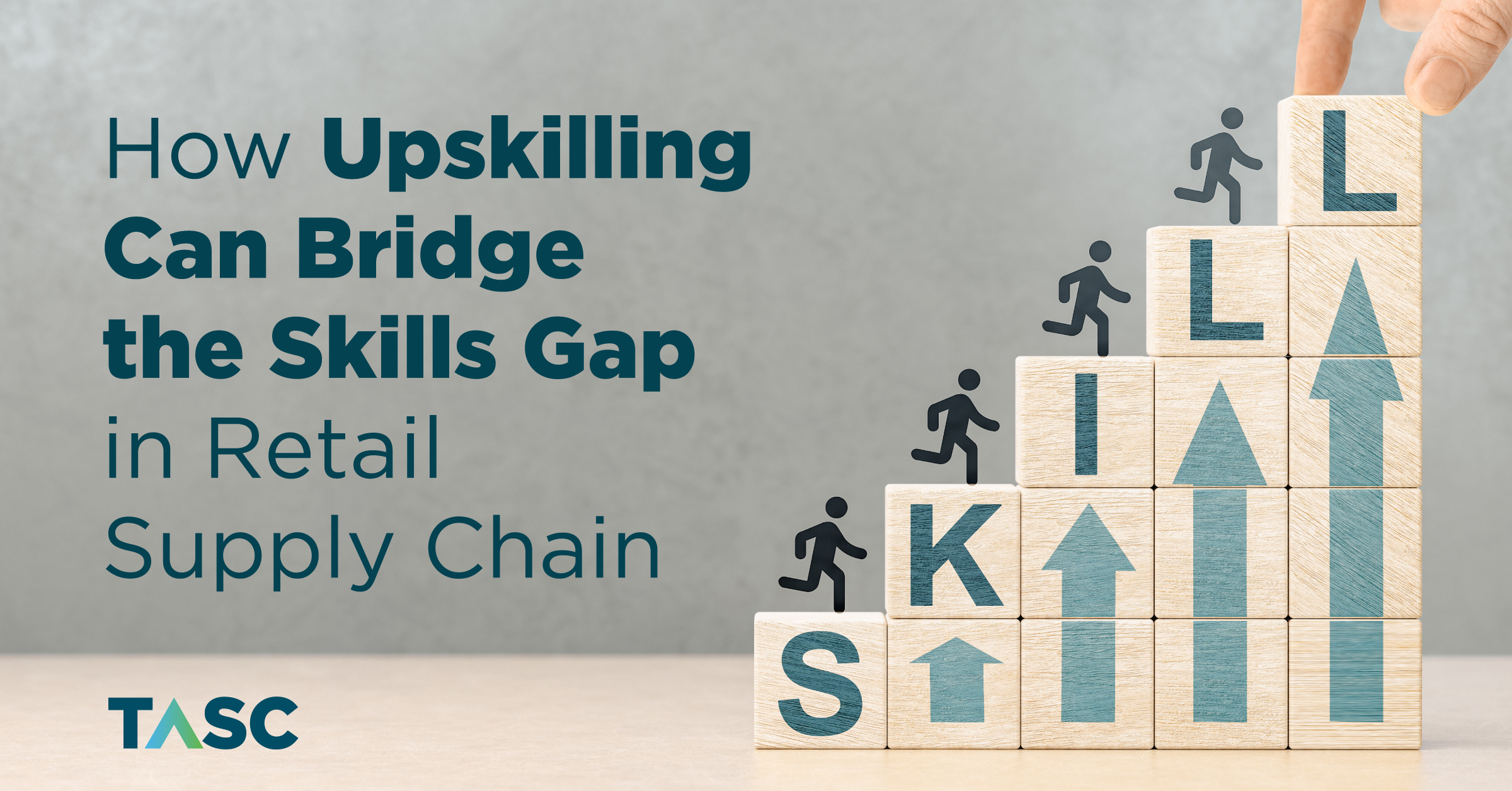How Upskilling Can Bridge the Skills Gap in Retail Supply Chain?
Over the past few years, supply chains have been under significant strain.
Challenges like shipping delays, material shortages, and a persistent labour shortage have pushed retail companies to seek innovative solutions.
One way that companies are trying to fix these issues is by using more technology. A 2023 report found that 74% of supply chain bosses are spending more on technology.
But technology alone isn't the answer. Many survey participants highlighted that a "lack of adequate talent" is a major barrier to fully utilizing technologies like artificial intelligence (AI) or the Internet of Things (IoT).
So, what can retailers do to bridge this gap?
"Upskilling" seems to be the right answer. It is the practice of helping current employees, in this case, supply chain workers, learn new skills to fill the gaps.
To run a good supply chain, you need both high-tech tools and skilled people.
When it comes to effective supply chain management, it’s important to take a balanced approach that involves strategic investments in technology with efforts to enhance human skills.
While upskilling is necessary for fixing gaps, it also plays a role in getting and keeping good workers. According to the Harvard Business Review, companies that help workers learn and grow tend to have happier, more loyal employees. A LinkedIn survey also found that most workers think learning and growing on the job is the most important thing about a good workplace. It was further backed by another survey highlighting that companies that help workers move up in their careers tend to retain them around for a lot longer.
Therefore, it would be safe to assume that addressing the skills gap through upskilling will not only help improve your retail supply chain but also benefit your employees and their careers.
The Consequences of Not Adapting
Technology has been growing at an exponential rate, which has resulted in a clash between experienced supply chain employees and tech-savvy newcomers.
The old-timers know the basics of supply chain stuff like predicting sales and managing inventory. But they might not be great with new tech and data.
On the other hand, newbies get the digital side but lack the deep supply chain know-how.
For example, when deciding how much extra stock to keep, companies usually focus on how much demand changes. But they should also think about how supply might change. Without understanding this, people might make bad decisions based only on forecasts.
Going digital isn't just about knowing how to use cool gadgets. Rather, it's about simplifying the complex supply chains by understanding how to leverage technology. But even with all the tech, we’d still need humans who can think critically and make smart decisions.
And the best way to bridge this gap between digital and traditional skills would be to take tailored approaches in training both old and new hands. If we don't, we risk falling behind our competitors, which is every retailer’s worst nightmare.
7 Strategies to Close the Skills Gap
Learning and Development (L&D) teams are in a prime position to help retail businesses tackle challenges head-on.
As discussed earlier, focusing on equipping employees with the right skills, learning stands out to be the key to bridging the skills gap and thriving in the current business landscape.
#1 – Conduct a Skills Analysis
To identify skill gaps, start with a skills analysis to pinpoint discrepancies in your employees' skills and knowledge.
Engage with staff members and team leads to understand what skills are lacking across different departments.
Utilize HR technology and establish Key Performance Indicators (KPIs) to assess each employee's contribution to the organization.
It’s important to have a clear vision of where your organization is heading and the skills required to reach those goals. Seeking input from external experts can also provide valuable insights into areas of improvement.
#2 – Define Key Skills
We live in an age of AI and rapid technological advancements. So, ensuring your supply chain workforce is digitally savvy is essential.
However, as discussed earlier, it's not just technical skills that matter. Skills like analytical thinking, leadership, resilience, and communication are equally crucial for a successful digital transition.
Conduct a training needs analysis to identify areas where your team needs upskilling, especially keeping the workforce dichotomy in mind.
#3 – Invest in Targeted Training Programs
Take proactive steps to provide tailored training programs that address the specific needs of your employees and organization.
Utilize technologies like AI to enhance learning experiences and incorporate microlearning for quick, focused training sessions.
You can also blend different training methods, such as online and in-person sessions, to create a comprehensive learning approach.
Make use of tools like VR simulations and role-playing exercises to provide realistic training scenarios.
After implementing these targeted training programs, you should also measure the impact of learning using data analytics.
#4 – Cultivate a Culture of Continuous Learning
Encourage a culture of lifelong learning within your organization, where employees take ownership of their development and actively seek out growth opportunities.
By fostering a growth mindset and investing in ongoing employee development, you can create a more engaged and motivated workforce ready to tackle future challenges.
#5 – Implement a Mentoring Program
Facilitate social learning by encouraging knowledge sharing among employees and establishing mentoring programs.
Peer-to-peer learning can be a powerful tool for skill-building, tapping into the expertise that already exists within your supply chain.
#6 – Promote Internal Mobility
Leverage your existing talent pool by promoting internal mobility and providing opportunities for job rotation. Encourage employees to switch tasks or roles occasionally to gain new perspectives and skills.
Promoting from within and offering reskilling opportunities not only addresses talent shortages but also fosters a culture of growth and development.
#7 – Prioritize Learning and Development
Make learning and development a top priority, not just in the supply chain but across all levels of the organization.
Closing the skills gap requires a strategic and comprehensive approach, but by prioritizing L&D initiatives, you can empower your teams to develop the skills needed for success.
With agility and strategic planning, it’s possible to tackle with the supply chain skills gap, ultimately to ensure organizational success.
Upskill to Invest in Your Company's Future
Upskilling is necessary for filling the skills gap, but it’s more than that. It's also about putting money in the bank for your company's future.
When businesses spend money on training, they see real results. Employees become more productive, turnover rates go down, and people are happier at work. Plus, a well-trained team can handle changes in the market better, making the company stronger in the long run.
Modern businesses can't afford to ignore the skills gap. The skills needed for supply chain management are changing fast, driven by new technology and what customers expect.
You need to act now because it’s the only way to grow and adapt for the long term.





